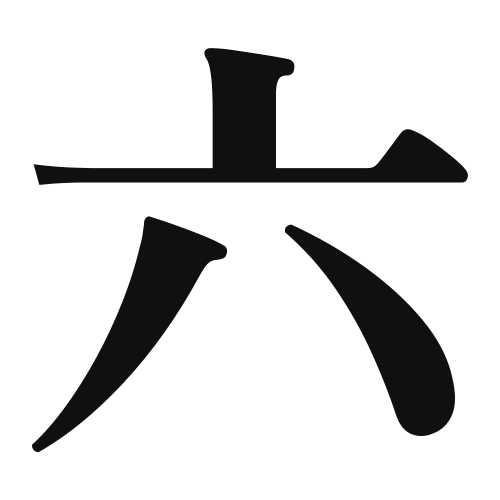1. Overview of Meaning
The kanji “六” (pronounced “roku” in Japanese) means “six.” It is a numeral used to represent the quantity of six in various contexts, such as counting, mathematics, and everyday life.
2. Formation and Radical
Formation of the Kanji: The kanji “六” is a pictogram that originally depicted the shape of a hand with fingers extended, symbolizing the number six. It belongs to the category of pictographs.
Radical: The radical for “六” is also “六,” which is used in other kanji related to numbers.
3. Examples of Usage
Common Words and Phrases: Some common words that include “六” are:
- 六角形 (ろっかくけい, rokkakukei) – hexagon
- 六日 (むいか, muika) – six days
- 六年 (ろくねん, rokunen) – six years
Example Sentences in Daily Conversation:
- 今日は六時に会いましょう。 (きょうはろくじにあいましょう。) – Let’s meet at six o’clock today.
- 彼は六つのリンゴを持っています。 (かれはむっつのりんごをもっています。) – He has six apples.
4. Synonyms and Antonyms
Similar Kanji: The kanji “五” (ご, go) means “five,” which is one less than six. The difference lies in their numerical value.
Antonyms: The kanji “七” (しち, shichi) means “seven,” which is one more than six, representing the opposite numerical value.
5. Cultural and Historical Background
Relation to Japanese Culture: The number six has various cultural significances in Japan, such as in traditional games and festivals. It is also considered a lucky number in some contexts.
Proverbs and Idioms: One common expression is “六根清浄” (ろっこんせいじょう, rokkon seijou), which means “purity of the six roots,” referring to the six senses and the importance of maintaining purity in perception.
